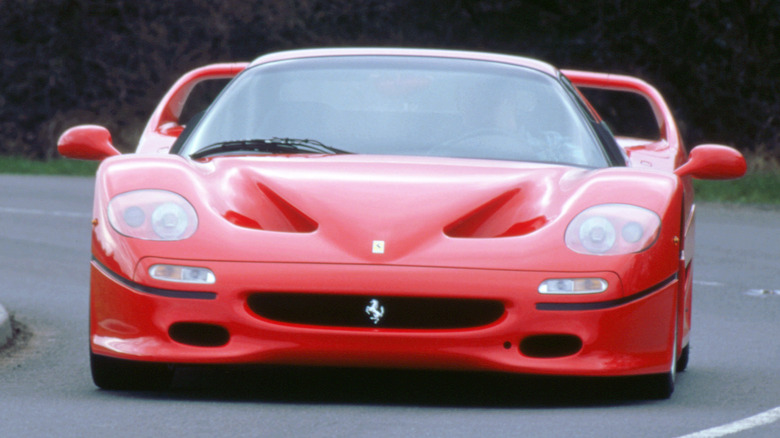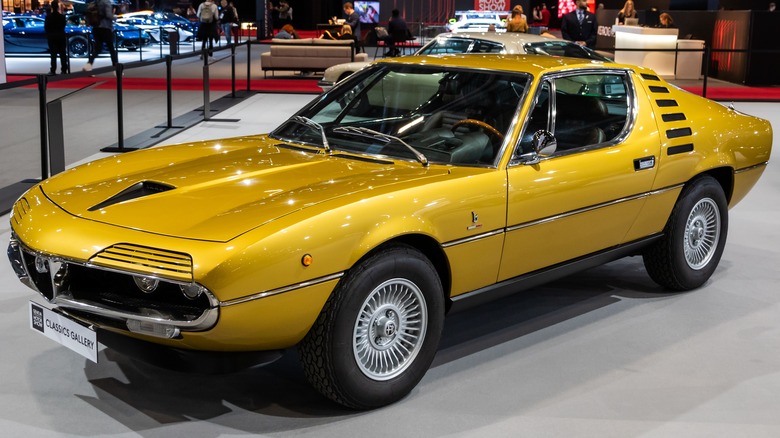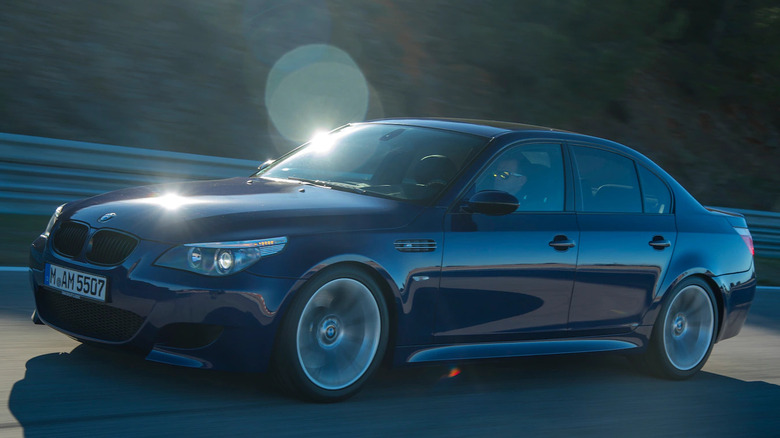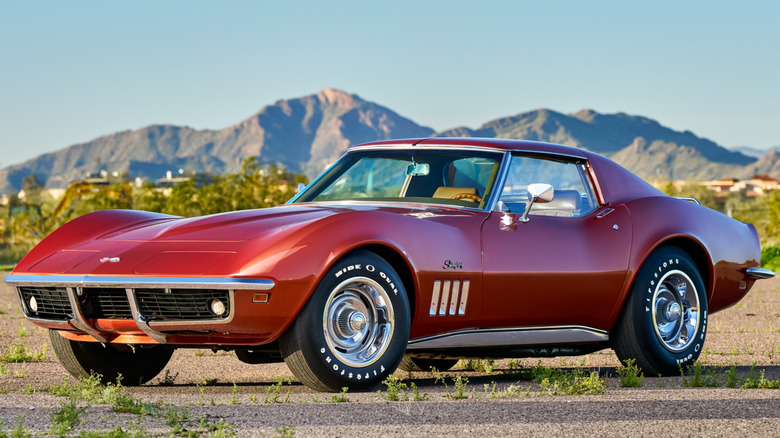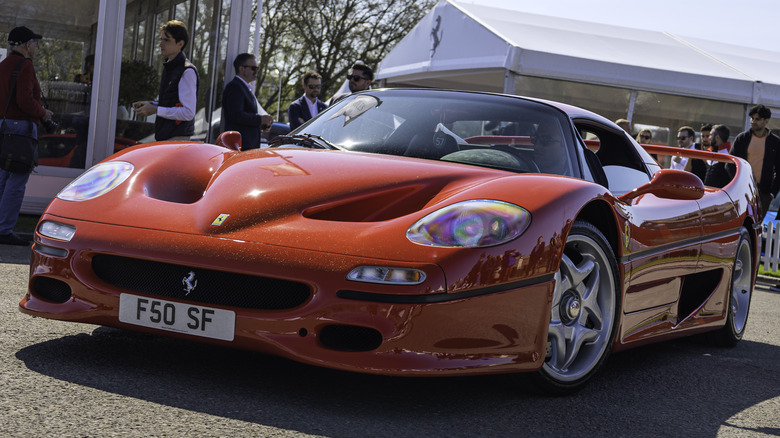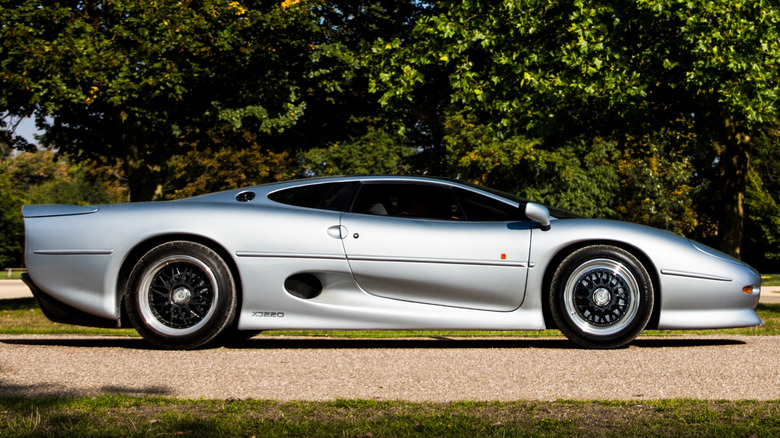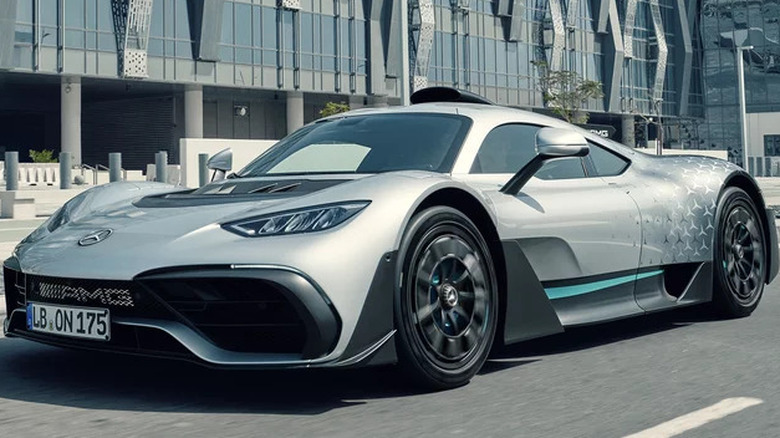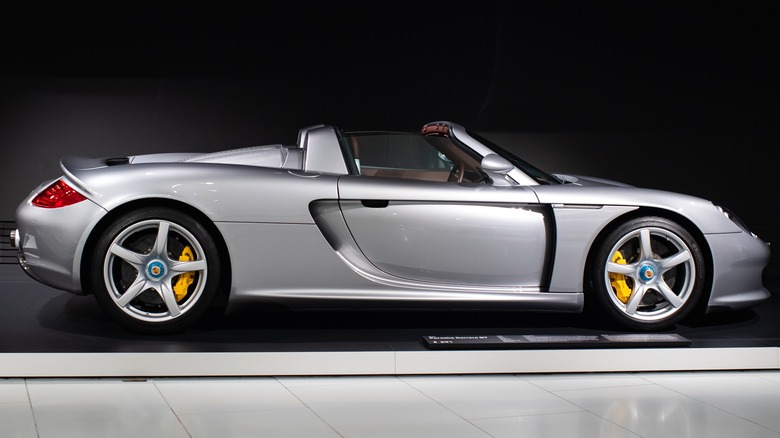7 Street-Legal Cars With Racing Engines
There are some limitations when it comes to creating street-legal cars, but that hasn't stopped a lot of top car manufacturers from pushing the limits with racing engines. Whether it's a street version of a race car or a Formula 1-inspired engine, these cars have incredible performance while remaining within the laws of the road, making them a joy on the track or while cruising down the highway.
So SlashGear has compiled a list of some of our favorite street-legal cars with racing engines, although there are plenty others out there. This list excludes 1930s cars such as the Bugatti Type 55 and Alfa Romeo 8C, which were both racing and road cars in their heyday. We've also excluded novelty specials like the Ford Supervan, and cars that didn't make it to market, like the Yamaha OX99 and Jiotto Caspita. Also no Prodrive-series cars like the Alfa Romeo 164 or BMW M1 are on this list, since they are modified versions of cars meant for track events. The following vehicles are all cars you could, at their time, see in a showroom and drive to work the next day.
Alfa Romeo Montreal
The Alfa Romeo Montreal came to be in the early 1970s when Alfa Romeo declared that there'd been a huge demand for a road-legal version of its racing concept car of the same name when it was displayed at the 1967 World's Fair in Montreal. The car was revealed soon after, eventually upgrading from a 1.6L four-cylinder engine to a detuned version of the 1967 Alfa Romeo 33 Stradale's 2.0L quad-cam dry-sump V8. Even with this detuned version, the Alfa Romeo Montreal boasted 2,593 cubic centimeters, 6,000 rpm, and 200 horsepower with a few adjustments.
At the time, the Alfa Romeo Montreal was considered incredibly impressive. It got to 60 mph in 7.5 seconds and had a top speed of 140 mph. The downfall of the short-lived vehicle was the price, coming in at $6,681 in 1972, higher than other sports cars of the early '70s. It ended its production in seven years, making the Alfa Romeo Montreal a rare car to come across both then and now — despite being one of the best Alfa Romeos of all time.
BMW M5 E60
This is the first M model BMW with a V10 engine, producing 507 horsepower and 383 pound-feet of torque — and with an incredible sound due to its high-rev concept. Development of the BMW M5 E60 with this special engine started in the early 2000s, using the same motor blocks from the same factory as its BMW Motorsport team in Formula 1. It reached 60 mph in just 4.7 seconds, making it an unforgettable ride.
Despite its incredible performance and award-winning engine, the M5 E60 is considered one of BMW's biggest flops, on the market from 2005 to 2010. The issue was not just the $101,852 base price tag of the car (in 2010 dollars) but the maintenance that followed. This included frequent oil changes and the rod bearings failing under 100,000 miles. This is not to say that the sporty car wasn't an incredible driving experience — it has die-hard fans that will sing its praises despite the high cost to keep it running.
Chevrolet Corvette C3 L88
The Chevrolet Corvette C3 L88 is a big deal in the automotive world. Only 20 were initially produced in 1967, but the engine was such a success on the track that Chevy released 80 more L88s in 1968 and then 116 more in 1969. Zora Arkus-Duntov engineered its 427-cubic-inch L88 big-block V8 engine that elevated it beyond the performance of other sports cars from that era. Due to the engine's design, it created 600 hp and reached 171.5 mph on the 24 Hours of Le Mans' Mulsanne straight — a new record.
This rare, powerful Corvette required 103-octane racing fuel, which wasn't available at most gas stations back then — and is still a rarity now. It also cost a bit more than other Corvettes in the '60s at $4,871 compared to the C2's $4,240, further deterring people from making the purchase. That hasn't stopped people in the modern age, however. One of the 20 C3 L88s from 1967 sold for $3.4 million at an auction in 2013.
Ferrari F50
The Ferrari F50 came out in 1995, racing onto the streets with a V12 engine with five valves per cylinder, twin overhead camshafts per cylinder bank, and dry sump lubrication to create a power output of 520 hp. The mid-mounted engine was derived directly from the F1 motor and it had technology and materials derived from F1 as well, with the intent to "replicate (as closely as possible) the complete Formula One experience on the open road." according to Ferrari. One of the fastest cars Ferrari ever built, the F50 GT reached 233 mph on the track.
The Ferrari F50 now sells for millions of dollars (it sat at $475,000 when it first came into production). This is due to not just its aerodynamic design and high performance but its extreme rarity. It's even harder to come across than the F40 it was inspired by. Only 349 were made in total from 1995 to 1997. There are only three left of the GT version after Ferrari destroyed three unfinished ones to prevent rivals from getting insight into the car's development.
Jaguar XJ220
Jaguar's cringeworthy rebrand would never allow you to believe this, but the XJ220 is a supercar that was meant to break the mold when it came to high-performance vehicles. The team behind the car admitted it was meant to be complex, with special attention to its aerodynamics and engine. The V12 was designed by Walter Hassan in the 1960s, developed and raced in the '80s, then taken by Jaguar for the XJ220 concept car and made into a 6.2L V12 that produced 700 hp.
But the Jaguar XJ220 was a bit ahead of its time. When production ended in 1994, only 281 of the expected 350 were produced. It's much forgotten despite reaching speeds of 213 mph and beating other supercars with its race-inspired engineering. Why? The promised V12 was later replaced with a V6, leading to lawsuits from buyers who wanted their reservation fees back after the swap. At the time, the Jaguar XJ220 was being sold for over $500,000 by the time it was being produced and it sits around the same price now.
Mercedes AMG-One
The 2023 Mercedes-AMG One had a futuristic hypercar design, but its real selling point was the Formula 1-inspired engine within. The 1.6L V6 hybrid engine has four electric motors in all, powering its turbocharger, combustion engine, and front wheels. This setup gives drivers a maximum of 1,063 hp, but the combustion engine itself only produces 574 hp to make sure the vehicle is street legal. Still, it has a top speed of 219 mph.
Something that stands out about the Mercedes-AMG One is its F1 magic — that is, how inspired by Formula 1 racing the overall design is. Beyond the engine, the supercar has a cockpit worthy of a race car thanks to its minimalist feel. The battery cooling technology further boosts the car's performance by ensuring the pack is always at the optimal temperature. The hypercar originally sold for $2.72 million and has only increased in recent years, reaching over $4.6 million. That's because only 275 were ever made when the One was produced in 2022 and delivered in 2023.
Porsche Carrera GT
The Porsche Carrera GT stood out in the early 2000s thanks to its V10 engine, inspired by a Le Mans racer. In fact, Porsche has stated that it's a "direct descendant" of what was meant to be used for Le Mans in 2000. While that Porsche car never made it to France, the V10 appeared in the Carrera GT, a two-seat mid-engine car with a limited run. Only 1,270 were sold between 2004 and 2006.
The GT reaches 60 mph in 3.5 seconds and is over 130 mph in a little over 10 seconds. That's thanks to the V10 having a power peak of 605 hp at 8,000 rpm. The exhilarating ride and craftsmanship had the Carrera GT selling for $440,000 when it came out — and it's only become higher. At one point, there were some selling for over $1.5 million due to the car's rarity and capabilities.
